I began the walk back along the wonderfully interesting little trail. Indeed, there had been a warning at the trailhead that this was not a trail for anyone fearful of heights... and while I most definitely am, I have never actually let that stop me!

There were at times LOTS of exposure along the rather narrow path.


The alcove


Almost back to the tunnel
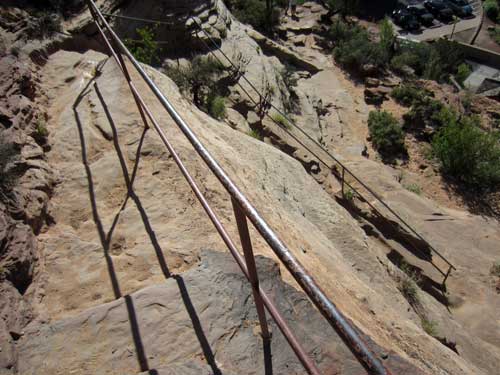
When I got back to the parking lot, a park ranger had stopped traffic heading into the tunnel. The line of cars was quite long. I asked a woman standing near me what was happening. She explained that a large vehicle was coming through the tunnel.
Apparently there used to be a lot of accidents in the tunnel due to tour buses, motor homes, trailers, etc... and more and more each year due to the increasing volume of traffic and size of the vehicles. A study in 1989 found that large vehicles could not negotiate the curves without crossing the center line. So starting that year, the park service began traffic control by posting rangers at either end of the tunnel. It costs a fee of $15 or so, but clearly people don't mind, for in 2011, some 27,874 oversized vehicles paid it!

I was now passing through the spectacular formations on the east side of the national park.



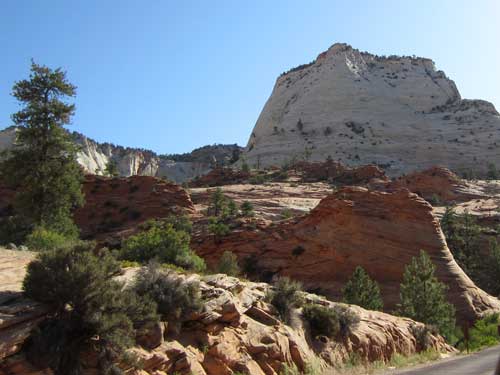



Any guesses as to why this is named Checkerboard Mesa?
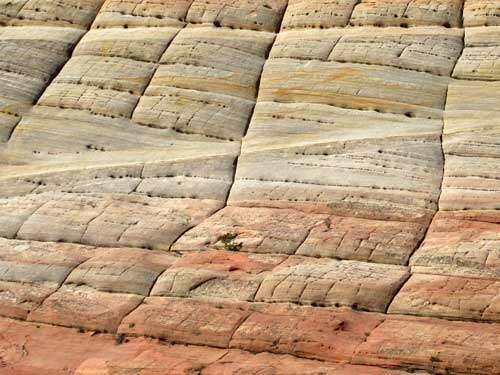
(Here's a hint)
I arrived at 10 am... but tent check-in wasn't until 3 pm. I was told if the site was open, I could set up early. But I decided to go for a walk around the observation area first.
Coral Pink Sand Dunes State Park was established in 1963. A good 90% of it (some 1,200 acres) is open to OHVs (off-highway vehicles... aka dune buggies and the like). The dunes are located in a notch between the Moquith and Moccasin mountains. Wind is funneled through this channel at high speeds, eroding and carrying away the Navajo sandstone. After the wind exits into an open valley, it slows down and drops the sand. And voila... sand dunes. This phenomenon is known as the Venturi Effect. The distinct pink color comes from a high concentration of iron oxides.

Click for a larger version

A satellite view shows it quite clearly. The canyon was created by the Sevier Fault, which runs directly beneath here... all the way from the Grand Canyon to central Utah.
The small observation area was surrounded by a fence... which I later learned was meant to keep OHVs out. Why allow them in the park at all? Well, there's big money in recreational vehicles and we still live in a society where the dollar is more important than wildlife (even endangered ones).
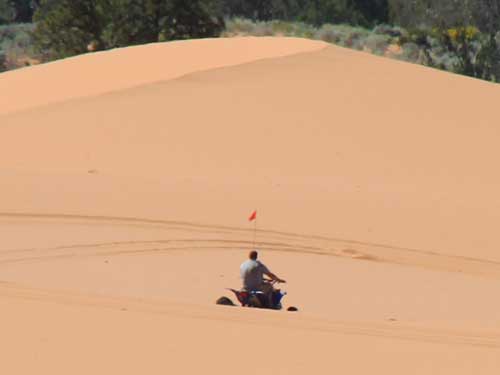
This park is for you...

... not so much for you.
There were many wonderful signs, lots of different plants and zillions of tracks in the sand.

The observation deck

The edge of the dunes

Rough Mulesears sends its roots ahead of the moving sand, so as the dune moves, the plant moves with it. Their leaves are covered with soft hair, which helps reduce water loss by diffusing the sun's radiation and to protect from the blowing sand.
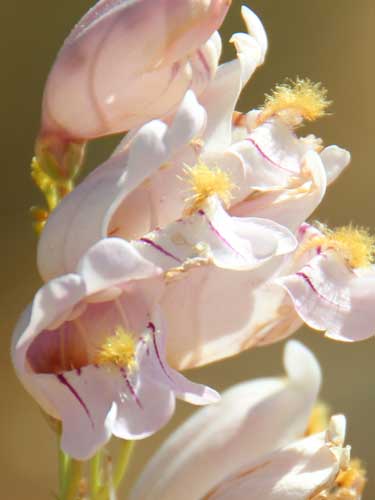
Palmer's Penstemon

Beauiful informative signs

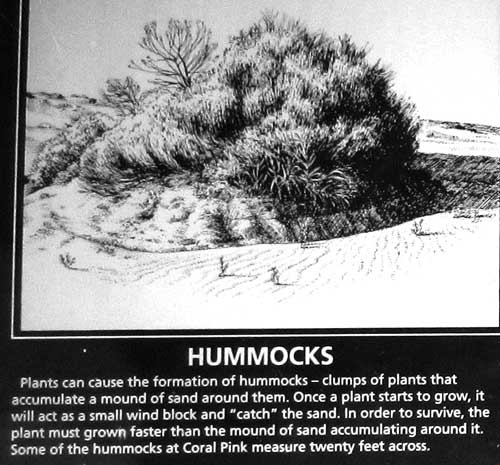

Named after William Gambel (a 19th century plant collector), the Gambel Oak doesn't venture very far out into the dunes. It prefers more stable dunes instead of shifting sands. Only a few plants are truly specialized to handle life out on the unstable (or active) dunes.

Because of the desert heat, it is wise for a plant to have tiny or even no leaves such as this Mormon Tea. By decreasing surface area exposed to evaporating wind and sun, the plant reduces water loss. It instead uses its green stems to make its food. Even though it doesn't look like it, it is related to pines. The Mormon pioneers used it to make... any guesses?... tea.

Rabbitbrush is native only to western North America. Many animals depend on it for food. It can shed its leaves when it needs to in order to conserve water.
The tracks were of all shapes, sizes and patterns. Incredible how much hidden life there was out here! ... rabbits, chipmunks, antelope squirrels, mice, kangaroo rats, voles, lizards, sakes, beetles, coyotes, gray foxes, raccoons, ring-tailed cats, weasels, skunks, owls...
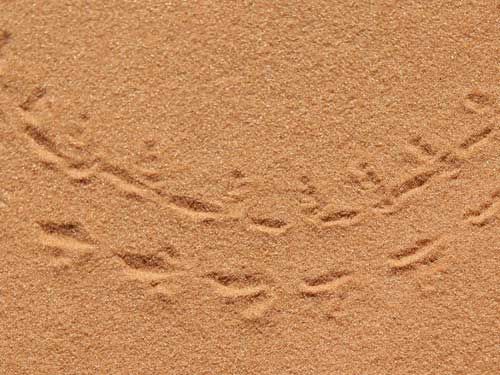
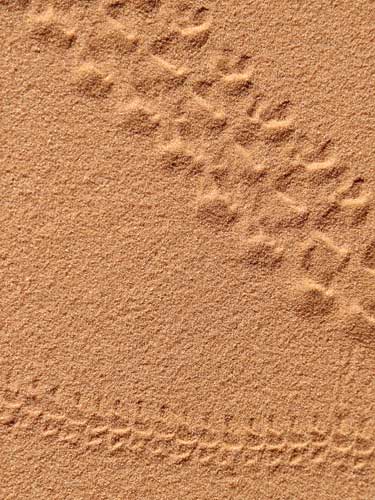



It's obvious what this kangaroo rat stopped to do!



Bigger tracks

A bird

Either going into or coming out of a hole

